In-Depth Analysis of the iPhone 8 Features
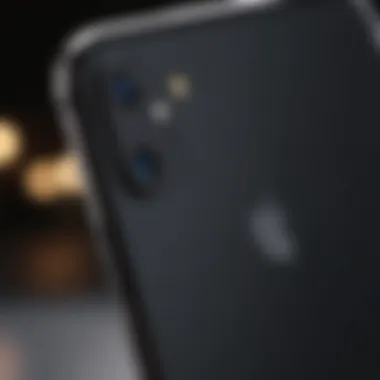

Product Overview
The iPhone 8 emerges as a pivotal model in Apple's innovative series of smartphones. Introduced in September 2017, this device showcases a blend of traditional design elements and modern technology. The phone is powered by Apple's A11 Bionic chip, which elevates performance and efficiency.
Key Features and Specifications
The iPhone 8 comes with a 4.7-inch Retina HD display, known for vivid colors and sharp details. It features a resolution of 1334 x 750 pixels, providing clarity for various applications. The device supports HDR10 and Dolby Vision, enhancing the multimedia experience.
From a hardware standpoint, the iPhone 8 incorporates a 12-megapixel rear camera and a 7-megapixel front camera. Both cameras leverage advanced technologies, including optical image stabilization and portrait mode, to enhance photography. The device includes storage options of 64GB and 256GB, catering to different user needs. Battery life is marked by fast charging capabilities, allowing users to quickly recharge their devices.
Design and Aesthetics
The design aesthetic of the iPhone 8 is characterized by its glass back and aluminum frame. This combination not only pleases the eye but also offers wireless charging capabilities. The device is available in several colors, including silver, space gray, and gold. The home button has been retained, signifying a nod to Apple's history while incorporating newer technologies.
"The iPhone 8 exemplifies Apple's continued commitment to combining style, technology, and usability."
Performance and User Experience
The performance of the iPhone 8 stands out in various benchmarks. With the A11 Bionic chip, it allows for smooth multitasking and runs demanding applications effectively. The Geekbench score highlights its competitive edge in the market, showing superior performance in tasks involving graphics and speed.
User Interface and Software Capabilities
The phone runs on iOS 11, offering enhancements and new features such as improved multitasking and AR support. The interface is intuitive, making navigation easy for both seasoned users and newcomers. Apple's commitment to regular software updates ensures ongoing improvements in security and features.
User Experiences and Feedback
User feedback generally highlights the impressive speed and camera quality. Many users appreciate the balance of a compact design with powerful performance. However, some critiques mention the battery life could be improved, especially under heavy use conditions.
Comparison with Previous Models or Competitors
When comparing the iPhone 8 to its predecessors, such as the iPhone 7, the advancements in camera technology and processing power are evident. The glass back for wireless charging marks a significant change in design philosophy.
Competitive Analysis with Other Similar Products
In comparison with competitors like Samsung Galaxy S8, the iPhone 8 holds its ground. The camera capabilities and performance metrics often place it on par with the offerings from other brands, suggesting it is a robust choice for consumers.
Value Proposition
The iPhone 8 positions itself as a mid-range option in Apple's lineup, offering features that appeal to a vast audience while remaining accessible. Its price point reflects the quality and brand prestige, making it an attractive option for tech enthusiasts.
Tips and Tricks
For users looking to maximize their experience, various tips and tricks can enhance performance and usability.
How-to Guides and Tutorials
- Utilize Do Not Disturb mode for uninterrupted focus periods.
- Customize Control Center for easily accessible settings.
- Take advantage of iCloud for seamless backup and Restore options.
Hidden Features and Functionalities
Some lesser-known features include Live Photos editing options, allowing users to manipulate their photographs creatively. The improved spotlight search functionality also streamlines finding apps and content across the device.
Troubleshooting Common Issues
Common problems may include issues with app crashing or battery drain. Ensuring the iOS is updated can often resolve these. Restarting the device also serves as a quick fix for temporary glitches.
Latest Updates and News
Apple continually enhances the iPhone 8 through software updates. Recent iOS upgrades have introduced new photo editing tools and improved device security.
Industry News and Rumors
Speculation surrounding future Apple's products often sparks attention among tech fans. Insights about upcoming releases frequently appear on platforms like Reddit and other tech news sources, keeping the community engaged.
Events and Announcements from Apple
Key announcements, such as the launch of new iOS versions, often occur during Apple's fall events. These gatherings reflect the company's focus on innovation and customer engagement, detailing the future of its product offerings.
Prologue to iPhone
The iPhone 8 represents a significant chapter in the history of Apple's smartphone evolution. It is critical to understand this model not only for its technical specifications but also for its context in technological advancement and consumer expectations. This model was part of a period when Apple sought to balance classic design with contemporary technology, resulting in a device that caters to various user needs. This article aims to explore the many aspects of the iPhone 8, examining its design, performance, and capabilities in depth.
Launch and Historical Context
The iPhone 8 was launched on September 12, 2017, alongside the iPhone 8 Plus and the much-anticipated iPhone X. This timing was deliberate, marking the ten-year anniversary of the iPhone line. The historical context of its launch is essential as it underscores Apple's strategy of offering familiar features while also embracing innovation. The iPhone 8 maintained a design perspective rooted in the past, similar to the iPhone 7, yet it included significant improvements such as a glass back and enhanced camera technology. This juxtaposition significantly contributed to its appeal, allowing it to attract loyal customers who valued continuity as much as cutting-edge tech. It was an attempt to bridge the gap between evolution and revolution, showing Apple’s intent to maintain its core user base while pushing forward with modernization.
Target Audience and Market Positioning

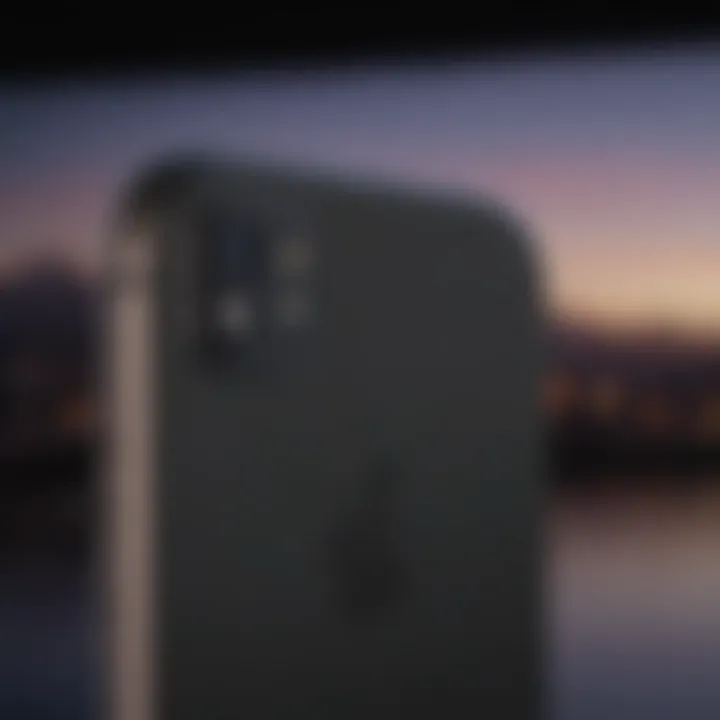
The target audience for the iPhone 8 spans a wide demographic. It primarily appeals to existing Apple users who might not be ready to move to the dramatically different iPhone X design. However, it also aims to capture new consumers looking for a mid-range flagship device. The key positioning strategy was to market the iPhone 8 as a reliable and powerful smartphone that embodies innovation without straying too far from traditional iPhone aesthetics.
The iPhone 8 was particularly aimed at individuals who prioritize camera quality, performance, and solid build quality over screen size and advanced features that the iPhone X offered. By doing so, Apple ensured that even those unwilling to embrace the radically designed iPhone X would have a compelling option in the iPhone 8. In essence, this positioning allowed Apple to segment its market more effectively, giving choices aligned to the needs of diverse users.
Design and Build Quality
The design and build quality of the iPhone 8 hold significant relevance not just for aesthetic appeal but also for durability and user experience. Apple's emphasis on quality materials and craftsmanship is evident in the iPhone 8. It combines both form and function, creating a device that is visually pleasing while also being robust enough to withstand everyday wear and tear. Understanding these elements can provide insights into the iPhone 8's market positioning and its appeal to potential buyers.
Dimensions and Weight
The dimensions of the iPhone 8 are pivotal in achieving a balance between usability and portability. Measuring at 138.4 x 67.3 x 7.3 mm, it fits comfortably in the hand, making one-handed usage manageable. Weighing only 148 grams, it is light compared to many smartphones of its generation. This weight contributes to user comfort during extended periods of use, which is a crucial consideration for consumers who rely on their devices throughout the day.
Material Composition
The material composition of the iPhone 8 reflects Apple's commitment to premium quality. The phone features a glass front and back, made from a durable Aerospace-grade aluminum frame. This choice of materials not only contributes to a refined look but also enhances wireless charging capabilities. The glass is engineered to be tough yet elegant, which resonates with consumers' desire for both functionality and design. Additionally, the use of high-quality materials ensures that the device can endure minor accidents, thereby extending its lifespan.
Color Variants
Color variants play a significant role in consumer choice, and the iPhone 8 offers a selection that caters to diverse preferences. Available in Silver, Space Gray, and Gold, these colors are strategically chosen to appeal to both classic tastes and contemporary styles. The subtle finishes and reflective surfaces provide an attractive appearance that stands out in a crowded smartphone market. Such variety allows consumers to personalize their devices, thus enhancing their overall satisfaction with their purchase.
In summary, the design and build quality of the iPhone 8 not only define its aesthetics but also impact user experience significantly. The careful consideration of dimensions, materials, and colors culminates in a device that embodies Apple's dedication to quality.
Display Technology
Display technology is a crucial element in modern smartphones, particularly for premium devices like the iPhone 8. This section reviews the display features of the iPhone 8, emphasizing their impact on user experience, functionality, and overall device appeal. With a focus on factors such as screen size, resolution, display type, brightness, and color accuracy, we can see how these specifications enhance the device's usability.
Screen Size and Resolution
The iPhone 8 features a 4.7-inch Retina HD display, offering a resolution of 1334 x 750 pixels. This results in a pixel density of approximately 326 pixels per inch (PPI). A screen of this size is practical for one-handed use while delivering enough real estate for engaging content. The resolution allows for sharp images and clear text, making it suitable for various applications, from watching videos to reading. Such a combination ensures that users can enjoy their multimedia consumption without noticeable pixelation.
Display Type and Features
The iPhone 8 uses LCD technology, specifically the IPS (In-Plane Switching) panel. This type of display is known for its excellent color reproduction and wide viewing angles. Unlike AMOLED displays that can offer deeper blacks, the IPS technology provides vibrant colors that remain consistent even when viewed from different angles. This feature is particularly significant for collaborative tasks, as it allows multiple users to view the screen without color distortion. Further, the display includes features such as True Tone technology, which adjusts the screen’s color temperature according to the ambient light, improving readability in different environments.
Brightness and Color Accuracy
Brightness is another critical characteristic, and the iPhone 8 achieves a maximum brightness of 625 nits. This level of brightness allows for clear visibility even under direct sunlight, contributing to a better outdoor experience. Color accuracy is maintained through the use of the DCI-P3 wide color gamut. This ensures that colors appear natural and true to life, making it especially appealing for photographers and designers who rely on color precision. The combination of high brightness and exceptional color accuracy enhances everyday interactions with the device, making the overall experience more enjoyable.
"In an era where display technology can make or break user experience, the iPhone 8 stands out due to its attention to color fidelity and brightness."
Camera Capabilities
The camera capabilities of the iPhone 8 are one of its standout features. In an era where mobile photography plays a significant role in personal and professional life, Apple's innovation in this area is pivotal. The iPhone 8 offers a blend of hardware advancements and software enhancements, appealing to photography enthusiasts as well as casual users. This section delves into the specifics of the rear and front camera specifications, along with the image processing techniques that the device employs.
Rear Camera Specifications
The rear camera of the iPhone 8 is equipped with a 12-megapixel sensor. This sensor features a wide-angle lens with an aperture of f/1.8, which allows for increased light intake, crucial in low-light environments. The optical image stabilization helps reduce blurriness caused by movement, enhancing image clarity. Furthermore, it supports advanced features such as:
- Quad-LED True Tone Flash: This ensures better lighting for subjects even in dim conditions.
- Focus Pixels: Increases the speed of focusing, which is essential for capturing fast-moving subjects.
- Smart HDR: This feature captures multiple images at different exposures and combines them to create a rich and vibrant photo.
Ultimately, these specifications indicate that the iPhone 8's rear camera is not just competent but competitive in the mobile photography landscape.
Front Camera Specifications
The front-facing camera in the iPhone 8 is designed with a 7-megapixel sensor and an f/2.2 aperture. This setup allows for decent self-portraits and videos. The inclusion of Portrait mode adds depth to selfies, creating a bokeh effect that highlights the subject against a blurred background. Additional key features include:
- 1080p HD Video Recording: Users can capture high-quality video for social media or personal use.
- Retina Flash: When activated, the screen illuminates to provide softer lighting for improved self-portraits.
- Animoji and Memoji: These features utilize the front camera for creating animated avatars based on one’s facial expressions.
The front camera thus possesses capabilities that cater not only to casual users but also to those eager to explore creative expressions in photography.
Image Processing and Software Features
The image processing technology incorporated in the iPhone 8 enhances both the rear and front cameras. Through the use of the A11 Bionic chip, images are processed with remarkable speed and efficiency. Some highlights of the software features associated with camera capabilities include:
- Machine Learning: The device can recognize facial expressions and scenes, optimizing camera settings accordingly.
- Extended Dynamic Range: This feature allows for improved detail in highlights and shadows, providing a more balanced image.
- Photo and Video Editing Tools: Users can manually edit their images through the built-in Photos app, offering various filters, cropping options, and adjustments.
In summary, the iPhone 8's camera capabilities cater to a wide audience, from everyday users wanting quality photos to professionals looking for advanced features. The combination of sophisticated hardware and software positions the iPhone 8 as a notable device in the competitive smartphone market.
"The iPhone 8 demonstrates how technology can elevate everyday experiences, especially through its powerful camera capabilities."
For more insights about the iPhone 8’s camera technology, you can visit Wikipedia or check related discussions on Reddit.
Operating System and Performance
The operating system and performance aspect of the iPhone 8 is crucial for understanding how this device operates in real-world scenarios. The synergy between the hardware and software influences user experience significantly. Here, we explore the iOS version it runs, the processing power, and the overall performance metrics.
iOS Version and Features
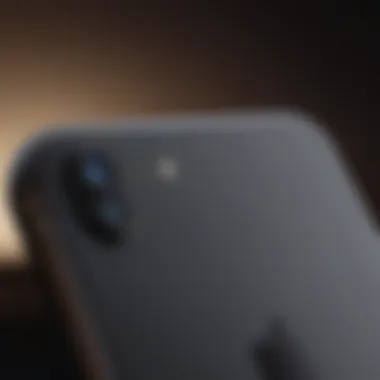

The iPhone 8 launched with iOS 11, bringing enhancements and features designed to improve usability and integration. Some notable features included:
- Improved Siri: The voice assistant received updates for better understanding and responsiveness.
- Control Center: Redesigned for quicker access to a variety of settings such as Wi-Fi, Bluetooth, and display settings.
- Augmented Reality Capabilities: iOS 11 introduced ARKit, enabling developers to create rich augmented reality experiences.
These features highlight Apple's commitment to blending functionality with user-centric design. Users could also benefit from regular updates, ensuring that devices stay current and secure.
Processor and RAM
At the core of the iPhone 8 is the A11 Bionic chip. This six-core processor is crucial for delivering speed and efficiency.
- Processing Power: The A11 Bionic is engineered to handle complex tasks effortlessly. This makes it suitable for gaming, video editing, and multitasking without noticeable lag.
- RAM: The device comes with 2GB of RAM. While this may seem modest by modern standards, the seamless integration with iOS allows for smooth performance in daily use.
The efficient architecture helps the device maintain performance under varying loads.
Performance Benchmarking
To evaluate the performance of the iPhone 8, several benchmarking tools provide insights into its capabilities.
- Geekbench: This tool demonstrated strong single-core and multi-core performance. The iPhone 8 outperformed many competitors, making it ideal for power users.
- AnTuTu: In graphical testing, it showed impressive performance for gaming and high-resolution video playback.
Factors like efficient thermal management and optimized software contribute to sustained performance even during demanding applications.
In summary, the combination of iOS 11, the A11 Bionic chip, and the performance benchmarks collectively position the iPhone 8 as a strong contender in the smartphone market, catering well to users looking for efficiency and robustness.
Battery Life and Charging Options
Battery life and charging options are crucial elements in evaluating the iPhone 8's utility and overall performance. As smartphones increasingly serve as the central hub of daily communication, entertainment, and productivity, the demand for longevity and efficient charging has become more pronounced. It is essential for devices to not only last through a busy day, but also offer convenient charging options that fit a variety of lifestyles and locations. This section delves into these factors, specifically looking at the battery capacity, endurance, and the charging technology employed by the iPhone 8.
Battery Capacity and Endurance
The iPhone 8 features a non-removable lithium-ion battery with a capacity of 1,821 mAh. This size may seem modest compared to some flagship competitors, but Apple has optimized its performance through software integration and hardware efficiency. The result is a device that can deliver up to 14 hours of talk time and up to 13 hours of internet use on a single charge.
In practical use, users generally report a full day of performance for average tasks such as browsing social media, taking photos, and responding to emails. The battery endurance can vary greatly depending on settings, app usage, and even environmental conditions. For users who engage in resource-intensive work, such as gaming or video streaming, the battery will deplete faster.
Key points about the battery capacity and endurance:
- Capacity: 1,821 mAh, a good balance for daily use.
- Talk Time: Up to 14 hours, ensuring users stay connected.
- Internet Use: Up to 13 hours, adequate for browsing needs.
- Real-world Performance: Varies based on activity, with heavy usage leading to quicker depletion.
Charging Technology Employed
The charging technology in the iPhone 8 includes both wired and wireless options. This flexibility allows users to choose a method that best fits their preferences.
For wired charging, the iPhone 8 supports fast charging capabilities via the Lightning connector. Users can achieve up to 50% charge in approximately 30 minutes with a compatible 18W or higher adapter, making it suitable for quick top-ups during short breaks.
In addition, the iPhone 8 is compliant with the Qi standard for wireless charging. This feature provides convenience for users who prefer a cable-free experience.
Considerations regarding charging technology include:
- Fast Charging: Up to 50% charge in 30 minutes with appropriate adapter.
- Wireless Charging: Compatible with Qi-enabled chargers for added convenience.
- Portability: External chargers and pads can help users manage battery life on the go.
Overall, the combination of battery capacity, endurance, and versatile charging options establishes the iPhone 8 as a reliable device for users who require consistent performance throughout their day. The advancements represent thoughtful engineering that caters to the modern smartphone user's needs.
"A device's battery life can make or break user experience. For the iPhone 8, its efficient use of power and diverse charging technology stand out as strong points."
In summary, understanding the battery life and charging options of the iPhone 8 is integral to grasping its overall functionality within Apple's product line.
Connectivity Features
Connectivity features play a critical role in defining the overall user experience of the iPhone 8. The ability to stay connected, whether through the internet or via other devices, significantly enhances how users interact with their smartphones. For a device such as the iPhone 8, extensive connectivity options bolster not only its usability but also its relevance in a fast-paced tech ecosystem. In this section, we delve into the wireless connectivity options available on the iPhone 8, followed by an exploration of Bluetooth and NFC capabilities.
Wireless Connectivity Options
The iPhone 8 offers a robust set of wireless connectivity options that facilitate seamless access to the internet and other devices. Key options include:
- Wi-Fi: The iPhone 8 supports 802.11ac Wi-Fi technology, which enhances internet speed and performance. The device can connect to both 2.4GHz and 5GHz bands, allowing for better performance in various environments. The availability of faster connectivity translates to smoother streaming, faster downloads, and improved online gaming experiences.
- Cellular Connections: Supporting LTE networks, the iPhone 8 assures users of reliable network connections when Wi-Fi is not available. The device can access speeds that facilitate everything from video calls to high-quality content streaming on the go.
- GPS: The built-in GPS enables users to navigate effectively whether they are on foot or driving. GPS functionality is crucial for location-based services and applications.
These wireless connectivity options contribute greatly to the practicality of the iPhone 8, making it an effective tool for both work and leisure.
Bluetooth and NFC Capabilities
The iPhone 8 continues Apple's trend of integrating advanced Bluetooth and NFC technologies, thereby enhancing the convenience and interactivity of the device. Here are the notable features regarding Bluetooth and NFC capabilities:
- Bluetooth 5.0: Bluetooth 5.0 provides several advantages over its predecessors. It offers faster data transfer speeds and improved range. This capability allows users to connect to a broader range of devices including speakers, headphones, and wearables without any significant lag or disconnection issues.
- Near Field Communication (NFC): NFC is primarily used for Apple Pay, enabling users to make secure payments with a tap of their phone at participating retailers. The simplicity and speed of NFC transactions streamline the payment process, making it safer and more efficient.
"In a world that thrives on connectivity, the features of the iPhone 8 serve not just as tools but as essential facilitators of modern communication and interaction."
User Interface and Experience
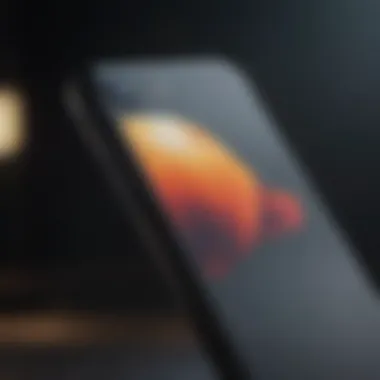
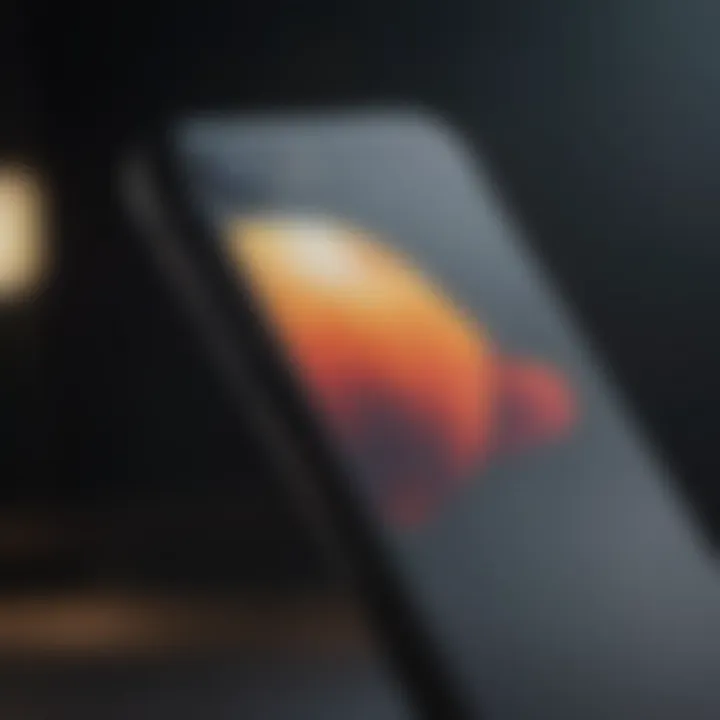
The user interface (UI) and overall experience of a smartphone significantly influence user satisfaction and productivity. This is especially true for the iPhone 8, where design and functionality seem to harmonize. Apple focuses on ensuring a seamless user experience that combines aesthetic appeal with practical usability.
Interaction Dynamics
Interaction dynamics refer to how users engage with the device through its interface. The iPhone 8 employs a fluid touch-screen operation, which is responsive and generally intuitive. Users can navigate through applications and settings with simple finger movements. A key aspect here is the integration of 3D Touch, a feature that adds a layer of depth to user interactions. When users press firmly on the screen, it reveals quick actions and shortcuts that enhance functionality without navigating away from the current screen. This feature may not be prevalent in many contemporary smartphones, thus setting the iPhone 8 apart.
In addition to touch inputs, voice commands via Siri provide an alternative interaction method. This feature allows users to send messages, make calls, or even adjust settings in a hands-free manner. Such versatile interaction styles cater to different user preferences and usages situations, ensuring accessibility and convenience.
Usability Patterns
Usability patterns in the iPhone 8 promote a user-centric approach. The layout of applications is designed to maximize efficiency, with commonly used functions easily accessible. For instance, frequently accessed apps can be placed in the dock for quick launching. The control center offers a central hub for functions like Wi-Fi, Bluetooth, and brightness adjustments, minimizing the time spent digging through settings.
Furthermore, the phone’s gesture navigation allows users to swipe back and forth between apps effortlessly. These usability patterns reduce the cognitive load on users as they navigate their device.
Proper design in user interfaces should eliminate barriers. It should feel natural, so users can focus on tasks rather than the tools they are using.
The integration of accessibility features such as VoiceOver and Magnifier also illustrates Apple's commitment to ensuring that all users can interact with their devices effectively. This aspect is crucial as it highlights the consideration Apple gives to diverse user needs, reinforcing a positive user experience across all demographics.
Audio and Multimedia
The role of audio and multimedia features in the iPhone 8 is quite significant. This aspect of the device caters to diverse needs from casual listening to professional audio editing. It brings forth an immersive experience for users who appreciate sound quality in their daily media consumption. Music, podcasts, and videos have become an integral part of life, thus making a robust audio system essential. The iPhone 8 aims to fulfill this demand, setting a standard for future smartphone audio experiences.
Speaker Quality and Sound Performance
The speaker quality of the iPhone 8 is engineered to deliver a powerful audio experience. With advancements from previous models, the stereo speaker system produces clear and rich sound across a broader range of frequencies. The audio performance is enhanced through the integration of technologies like Spatial Audio, which offers an enveloping sound experience when watching supported content. The overall output remains consistent whether listening to music or watching movies.
Many users have reported a noticeable improvement in sound depth and clarity compared to earlier models. This is crucial for those who enjoy high-fidelity audio. Furthermore, the placement of the speakers allows for better sound projection, ensuring that audio does not become muffled during use.
"The iPhone 8 makes it easy to enjoy high-quality audio on the go, whether you're at home or commuting."
Audio Formats Supported
The iPhone 8 supports a diverse range of audio formats, ensuring compatibility for various user needs. Some of the notable formats include:
- AAC (Advanced Audio Codec)
- MP3 (MPEG Audio Layer III)
- WAV (Waveform Audio File Format)
- AIFF (Audio Interchange File Format)
- ALAC (Apple Lossless Audio Codec)
This broad support allows users to play music and soundtracks from different sources without worrying about format restrictions. For audiophiles, ALAC and AIFF offer lossless quality, which preserves the original sound details.
Additionally, streaming services are also supported, providing access to high-quality tracks from platforms like Apple Music and Spotify. This means whether you prefer downloaded music or streaming, the iPhone 8 delivers an effective audio experience.
Security Features
The rise of digital technology has made security a significant concern for users. In this context, the iPhone 8 integrates advanced security measures that provide users with increased protection. This section examines key aspects of the device's security features, shedding light on the importance of biometric authentication and data protection measures.
Biometric Authentication
Biometric authentication is a critical feature in modern smartphones, allowing for quick and secure access to devices. The iPhone 8 introduces Touch ID, a fingerprint recognition system that permits users to unlock their phones and authorize payments and app downloads conveniently. This technology not only enhances user convenience but also elevates security by adding an additional layer beyond traditional passwords.
The implementation of Touch ID is designed to offer users greater control over who can access their personal information. The fingerprint data is securely stored in the device's Secure Enclave, which is a dedicated processor. This means that your fingerprint never leaves the device, providing reassurance against potential breaches.
Data Protection Measures
In addition to biometric authentication, the iPhone 8 adopts multiple data protection measures aimed at securing user information. One notable feature is the use of end-to-end encryption for iMessages and FaceTime calls, ensuring that communications remain private between the sender and receiver.
Moreover, users can implement a variety of security settings, such as enabling a passcode, setting up automated updates for software, and activating the Find My iPhone option. These options assist in tracking and protecting the device in case of loss or theft.
Furthermore, Apple’s commitment to privacy means they routinely update their software to patch any vulnerabilities. This proactive approach stands out against competitors and assures the user base of continuous improvement to safeguarding their digital lives.
"Security is not just a feature; it’s a fundamental aspect of user trust in technology."
Finale and Summary of Insights
In evaluating the iPhone 8, we arrive at a pivotal point where we can appreciate its contributions and limitations within the broader technological landscape. This section consolidates the insights gained from exploring the various features, from design and specifications to user experience and ecosystem integration. The importance of these evaluations lies in their ability to provide a clearer understanding of how the iPhone 8 fits into the expectations of modern smartphone technology while aligning with Apple's broader goals and market trends.
Evaluating Overall Value
The iPhone 8 presents a unique value proposition for various user segments. Its design combines aesthetics with functionality, demonstrating that Apple still values quality crafting. The hardware and software integrations suggest a premium experience, particularly when running newer versions of iOS.
However, as smartphones advance, some competing devices may offer superior specifications, such as larger battery capacities or advanced camera systems. Key factors to consider include:
- Performance: The A11 Bionic chip ensures that the device operates smoothly even under demanding conditions.
- Price Point: Depending on market fluctuations, it may list at a more accessible price than other premium models.
- Durability: Built with glass and aluminum, it showcases resistance to daily wear and tear, which can be a significant advantage.
Overall, the iPhone 8 warrants consideration not only for its technical spec but also for its ongoing relevance amidst fierce competition.
Position in Apple's Ecosystem
The iPhone 8 embodies Apple’s strategic approach to maintaining a diversified product lineup. It lies between entry-level options and high-end models, catering to both casual users and professionals looking for reliable performance without investing in the latest flagship models.
- Integration with Services: The device works seamlessly with Apple’s ecosystem, including services like iCloud, Apple Music, and Apple Pay, enhancing its appeal.
- Future Updates: Even while newer models exist, the iPhone 8 continues to receive software updates, which prolongs its lifespan and usability.
Thus, the iPhone 8 effectively occupies a significant tier in Apple's offerings, reflecting a blend of innovation, accessibility, and timeless design.
The iPhone 8 is not merely a device; it is an essential piece that unlocks access to the broader Apple ecosystem, allowing users to seamlessly connect with their digital life.
In summary, the iPhone 8 displays a robust framework that addresses the core demands of users while complementing Apple's narrative of progress and integration in technology.



